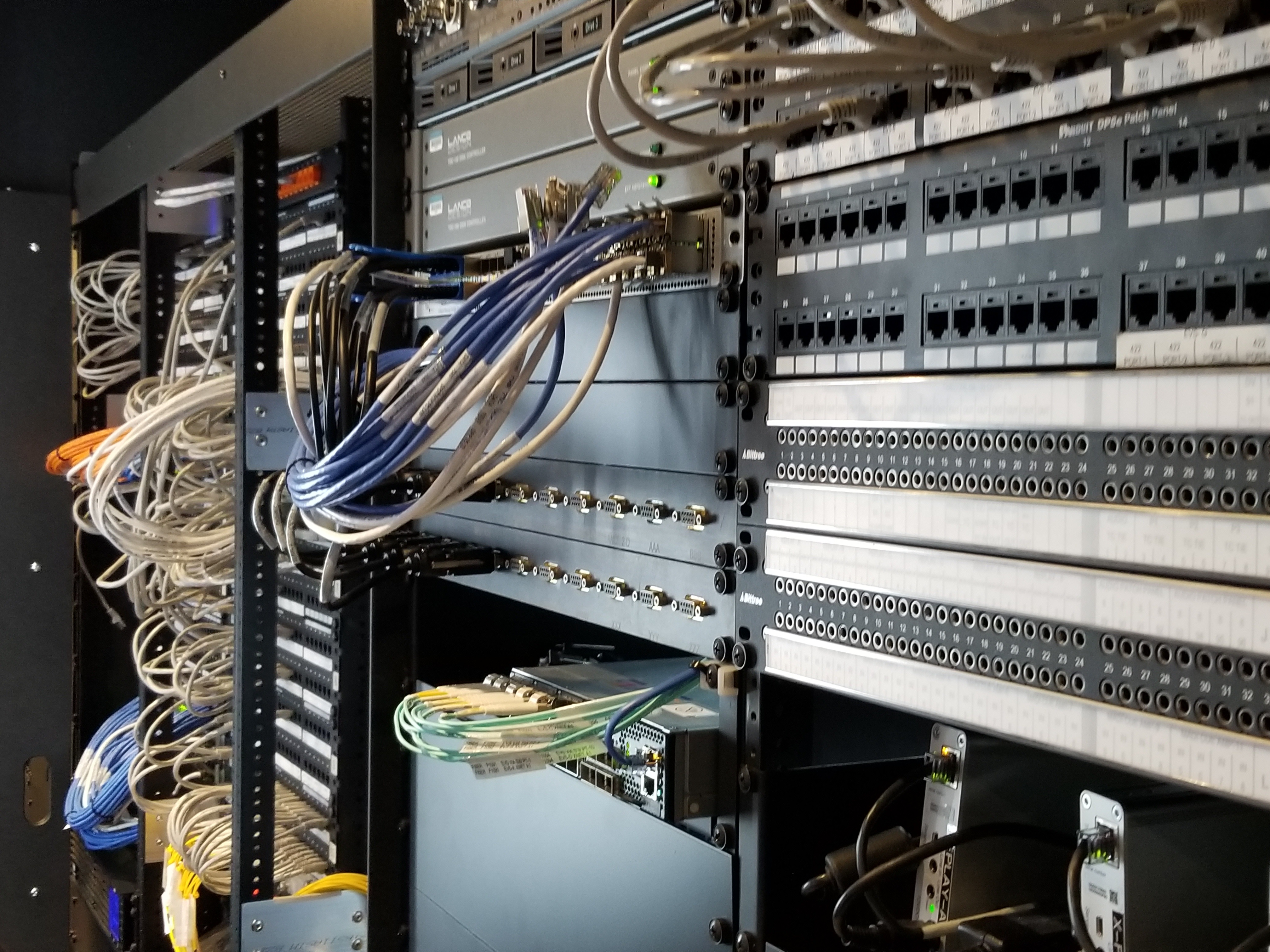LAS VEGAS—The bottom line for Nick Garvin, COO of Mobile TV Group, when it comes to IP-based production trucks is that the real benefits of this transport technology are flexibility and capacity, two qualities in abundance in its new 45Flex end-to-end native IP double-expando OB vehicle on display at the recently concluded 2019 NAB Show in Las Vegas.

“In the past, when you needed a very large show, you might need to roll multiple mobile units,” said Garvin. “Three mobile units just because of the sheer size of the router and the equipment needed. With this, we can pack it all into one mobile unit.”
The truck, parked during the show between the Central and South Halls of the Las Vegas Convention Center, isn’t simply a mobile production studio with an IP router. It’s what Mobile TV Group has dubbed “end-to-end IP native.”
In other words, in addition to the Evertz 16 RU EXE-VSR router with Magnum control system, all major technology components transport audio, video and ancillary data as IP packets using the SMPTE ST 2110 protocol. Those include a Grass Valley Kayenne control panel and K-Frame X production switcher; Grass Valley cameras—the LDX 85 with IP XCUs and LDX 82 with IP XCUs; EVS XT-VIA and XS-VIA replay/record servers with IP backplane; Evertz evMV-32x10G-Q and 36x4 IP multiviewers; and Leader LV7600 IP waveform/vector rasterizer. “Even the [Calrec Artemis] audio mixer is connected via IP,” adds Garvin.

By leveraging SMPTE ST 2110 IP transport, 45Flex, which was bound for Fox Sports Midwest following the NAB Show, is relatively easy to transition to meet individual show requirements for 1080i, 1080p or 4K UHD HDR. “Part of the reason that this unit is IP is that it can be flexible and transition to these different resolution and whatever the customer needs,” he said.
During a walkthrough of 45Flex at the NAB Show, Garvin repeatedly pointed out instances where IP transport contributed to the vehicle’s overall flexibility. “This is the back of the EVS,” he said, as he pointed to the backside of the replay/recorder. “Traditionally, you would see all of these spigots filled with digital coax, and now you can see all of the spigots are empty and just the fiber coming out there.”
“Why this matters is it gives us the ability to say ‘Yes’ more often,” explained Garvin. “‘Can we add this camera here?’ ‘Can I have this monitor do this?’ ‘Can I move positions?’ The answer is just more yeses.”
The professional video industry's #1 source for news, trends and product and tech information. Sign up below.
Another benefit of having the added capacity shows up in meeting the need for multiple feeds from the regional sporting events 45Flex will cover. “Most people don’t know that a regional sporting event is enormous now. We are talking close to college football-level,” said Garvin.
“That’s not only the cameras we have out in the field, but also camera feeds that are coming out of the truck.”

Garvin listed some of the frequently required feeds: two different shows—the home show and the away show; a league feed, such as to the NBA; a referee system feed; a special feed for viewers watching on a mobile device; clean feeds distributed internationally; and a feed for OTT platforms. “And that’s just an everyday regional sports network event,” he said. “So having IP capacity is becoming more and more important.”
As would be expected, an end-to-end native IP truck is lighter than a coax-based baseband truck, said Garvin. However, this won’t necessarily translate into fuel savings.

“Our traditional mobile units run exactly at 80,000 pounds, which is the DOT [Department of Transportation] limit. We are hoping to have a little more flexibility with 45Flex to add more and different things,” he said.
While multiple vendors have participated in multiple plugfests and other industry-facing interops to promote harmony among their disparate pieces of ST 2110-based technology, influence exerted privately by companies like Mobile TV Group has also played a role in making sure these products can communicate with each other.
“Luckily we are big enough. We work really closely with the manufacturers,” said Garvin. “We bring them all together at our shop and say, ‘We’ve got to work together. We all know it’s going to be 2110. Now make your systems talk.’”
“We are almost the mediator, bringing everyone together and making the systems work flawlessly.”
Phil Kurz is a contributing editor to TV Tech. He has written about TV and video technology for more than 30 years and served as editor of three leading industry magazines. He earned a Bachelor of Journalism and a Master’s Degree in Journalism from the University of Missouri-Columbia School of Journalism.

